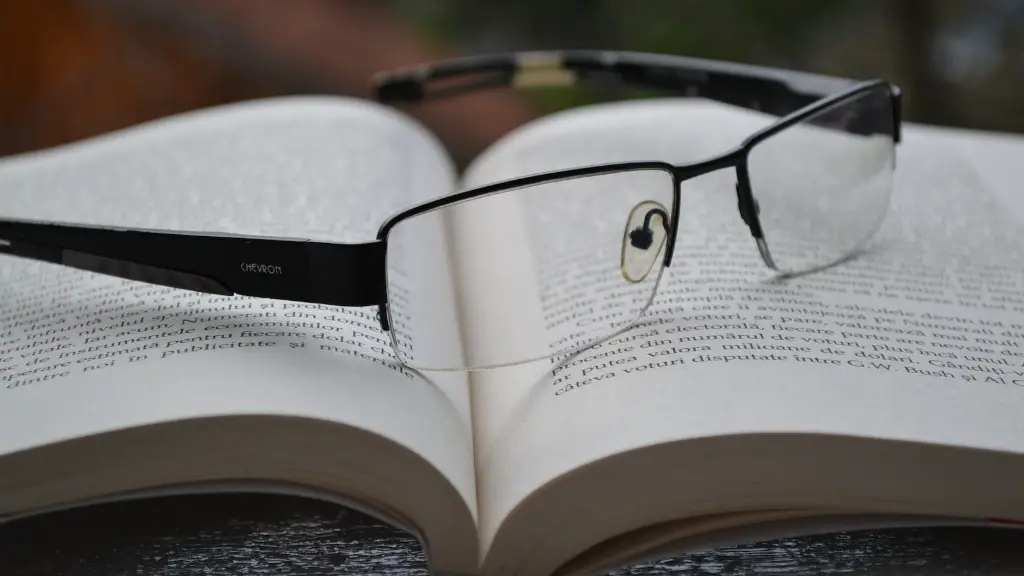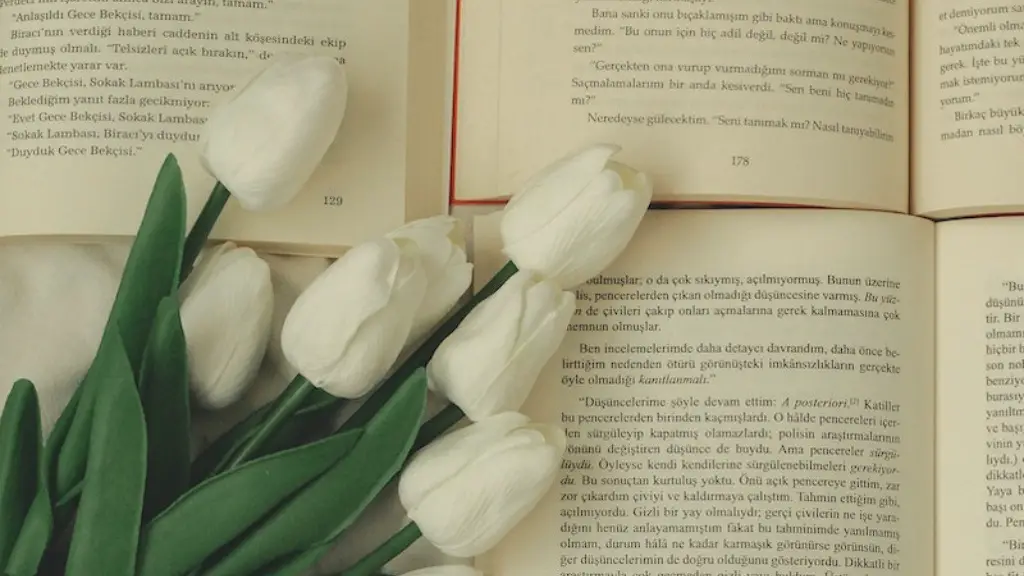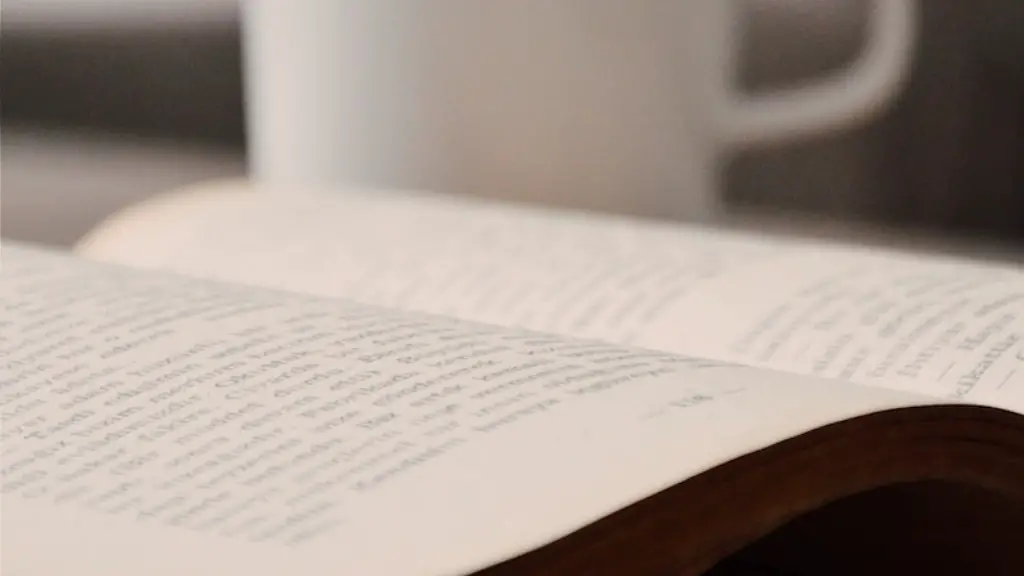What is Meter in Poetry?
Meter is a poetic device that is used to organize a line of words. It consists of certain syllables combined together in a particular way to create rhythmic effects. The specific pattern of syllables dictates the mood and melody of the poem. Meter is sometimes described as the pattern of weak and strong stresses in a poem. A stress is the emphasis placed on a syllable, which is usually determined by its length and by how loud it is pronounced. In poetry, meter helps the reader to gain a sense of motion within the lines.
How Meter is Used in Poetry
Meters are most commonly used in poetry, but they are also frequently used in lyrics for songs. Meter is commonly divided into two main types: metrical feet and metrical lengths. Metrical feet are the basic units that make up a poem’s meter. A metrical foot is a group of syllables that have been arranged together according to specific patterns. For example, in English poetry, an iambic foot is a pattern of two syllables, one of which is stressed and the other is unstressed. Similarly, in Spanish, a trochaic foot is a pattern of two syllables, the first one stressed and the second one unstressed. Metrical length is the total number of syllables in a line. For example, a line with ten syllables is said to have a length of ten.
Examples of Meter in Poetry
One of the most commonly used types of meter in English poetry is iambic pentameter. This is a type of meter that consists of five iambic feet in a single line. Iambic pentameter is often used in Shakespearean sonnets, as it helps to create a steady and rhythmic flow. Similarly, trochaic tetrameter is a type of meter consisting of four trochaic feet in a single line. This type of meter is often used in ballads and other lyrical forms of poetry, as it gives the poem a steady rhythm that is easy to understand and appreciate.
The Effects of Meter in Poetry
Meter can have a profound effect on the overall tone, mood, and atmosphere of a poem. For example, iambic pentameter often creates a slow, gentle, and soothing effect. Similarly, trochaic tetrameter can give a poem an energetic and upbeat tone. Meter can also help the poet to emphasize certain words or phrases. By changing the meter of a line, the poet can create a subtle shift in the rhythm and mood of the poem. This can help to convey a certain emotion or idea more effectively.
What Meter is Best Suited for a Poem?
The type of meter that is best suited for a poem largely depends on the type of poem that is being written. For example, a romantic poem may benefit from the use of iambic pentameter, while a more upbeat and energetic poem may benefit from the use of trochaic tetrameter. Similarly, a poem with a more serious or somber tone could benefit from a meter such as dactylic hexameter, which has a more stately and dignified feel. Ultimately, the decision of which meter to use is often left up to the poet.
Difficulties in Using Meter in Poetry
While meter can be a powerful tool in poetry, it can also be difficult to use effectively. In order to create a successful poem, the poet must be able to understand the various metrical feet and metrical lengths, as well as the effects that they have on the poem as a whole. Additionally, the poet must be able to control the rhythm and meter of the poem in order to create the desired effect. Without these abilities, it can be difficult for a poet to create a successful poem.
Commonly Used Metrical Feet and Metrical Lengths
Common examples of metrical feet in English poetry include iambs, trochees, anapests, dactyls, and spondees. Common examples of metrical lengths include monometer (one foot), dimeter (two feet), trimeter (three feet), tetrameter (four feet), pentameter (five feet), and hexameter (six feet). Additionally, some poets may also incorporate lines of uneven-lengths, such as a line of three syllables followed by a line of five syllables. This is known as heterometrical verse.
How Meter Relates to Rhyme
Meter and rhyme often go hand-in-hand in poetry. In fact, rhyme is often used as a way to emphasize the underlying meter of a poem. For example, when a poet uses a rhyme such as “cat” and “hat,” it can help to emphasize the iambic pattern of “cat-hat” in a line of iambic pentameter. Additionally, rhyme can help to emphasize the metrical length of a line, making the rhythm easier to understand and appreciate.
Can Meter be Used with Free Verse?
Meter can indeed be used with free verse. In fact, many free verse poems use meter to create a sense of rhythm and flow. However, free verse poets may not rely as heavily on meter as traditional poets do. Instead, they may use meter as an subtle tool to create a particular mood or atmosphere within the poem. Additionally, free verse poems may incorporate lines of varying metrical lengths, making it difficult to identify any specific type of meter.
How to Develop an Understanding of Meter
Understanding the basics of meter can be relatively simple. Familiarizing oneself with the different types of metrical feet, as well as their associated lengths, is the first step. The next step is to practice using these metrical feet and lengths in a variety of poems. As one continues to practice, they will likely develop an understanding of meter and its effect on a poem. Additionally, reading and analyzing the works of other poets can also help to enhance one’s understanding of meter.
Varieties of Meter
Meter can be divided into a variety of different types, including classical meter, ballad meter, hymn meter, and accentual meter. Classical meter is a metrical system that is used in classical Latin poetry. It is divided into two main types: quantitative meter, which is based on syllabic length, and accentual meter, which is based on the number of stresses per line. Ballad meter is a type of meter that is often used in ballads and other lyrical forms of poetry. It consists of alternating lines of iambic tetrameter and iambic trimeter. Hymn meter is a type of meter used in Christian hymns. It is characterized by lines of varying length, but with a strong emphasis on the first syllable of each line. Accentual meter is a type of meter that is based on the number of beats per line, rather than the number of syllables.
Effects of Using Meter on Poems
Using meter in poetry can have a profound effect on the overall tone and mood of the poem. By employing different types of metrical feet and lengths, the poet can create a subtle shift in the rhythm and flow of the poem. Additionally, meter can help to emphasize certain words or phrases, allowing the poet to create a particular mood or atmosphere. When used skillfully, meter can help a poem to move the reader in ways that can’t be achieved without it.



